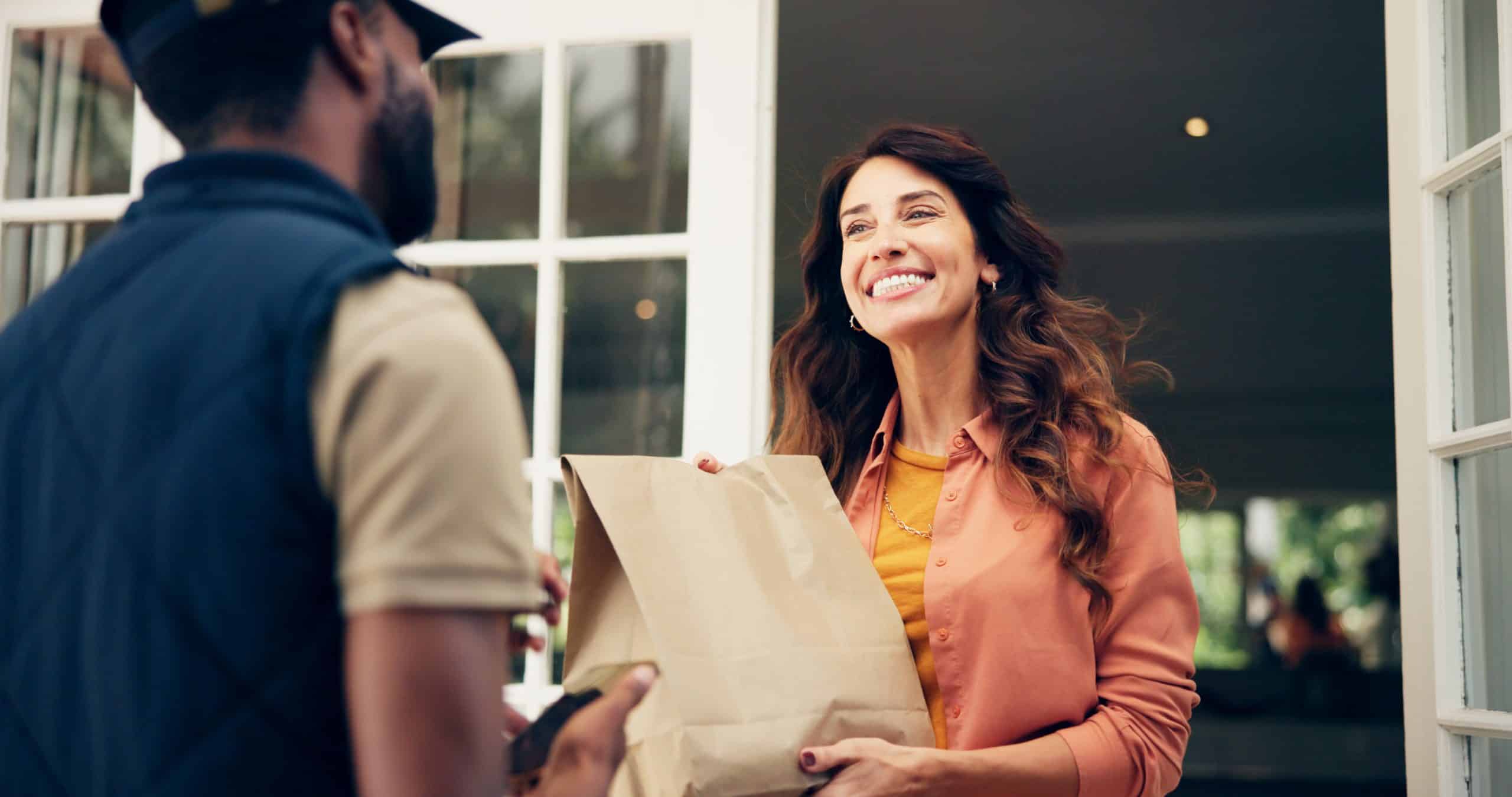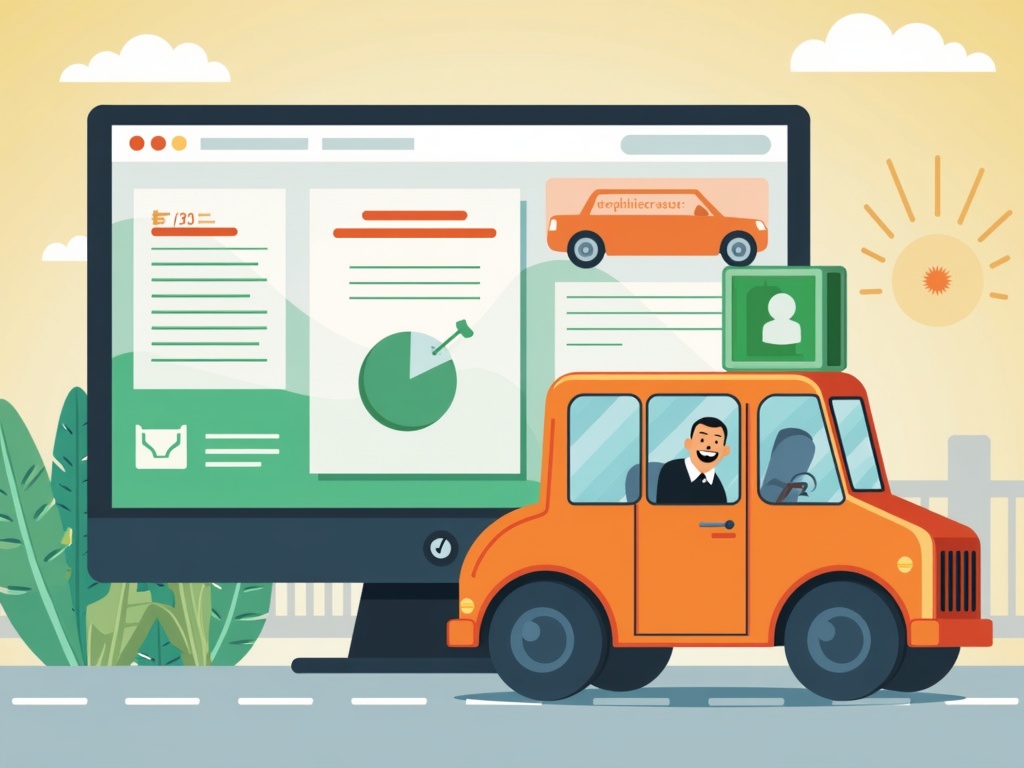DoorDash vs. Uber Eats: Which Delivery App Reigns Supreme for Drivers?
The aroma of sizzling fajitas fills your car as you navigate through rush hour traffic. Another delivery, another few dollars closer to your daily goal. You glance at your phone – DoorDash or Uber Eats pinging with new orders? For many gig workers, this is the daily grind, a constant hustle in the ever-expanding world of food delivery. But the question remains: in the battle of DoorDash vs. Uber Eats, which platform truly offers the best opportunities for drivers?
This isn’t just about personal preference; it's about maximizing earnings, optimizing your time, and navigating the intricacies of each app to come out on top. So, buckle up as we delve deep into a comprehensive comparison, dissecting every crucial aspect from pay structures and peak hour bonuses to driver support and flexibility, ultimately revealing which delivery giant deserves a prime spot in your gig economy arsenal.
Earnings Potential: Crunching the Numbers
Let's get straight to the heart of the matter: money. How much can you realistically earn as a DoorDash or Uber Eats driver? The answer, as with most things in the gig economy, is nuanced. Several factors influence your take-home pay:
- Base Pay: Both platforms offer a base pay per delivery, which varies depending on distance, time, and demand.
- Tips: Tips are a significant portion of your earnings. Customer generosity can make or break a delivery.
- Promotions & Bonuses: Peak hour bonuses, challenges, and quests can significantly boost your income.
- Operating Costs: Don't forget to factor in the expenses: gas, vehicle maintenance, and insurance.
DoorDash Earnings: Dash for the Cash?
DoorDash employs a relatively transparent pay model. You typically see an estimated payout before accepting an order, allowing you to decide if it’s worth your time and effort. DoorDash also frequently offers challenges, rewarding you for completing a certain number of deliveries within a specific timeframe. These can be a great way to pad your earnings. Plus, DoorDash often has partnerships and promotions offering guaranteed earnings during certain periods.
Uber Eats Earnings: Eating into the Market Share?
Uber Eats' pay structure is similar, with base fares, tips, and potential surge pricing during peak demand. Uber Eats drivers sometimes benefit from Boost promotions, which multiply your earnings in specific zones. However, some drivers find Uber Eats' estimated payouts less transparent than DoorDash's, occasionally leading to surprises (both pleasant and unpleasant) after completing the delivery.
The Verdict: Show Me the Money!
Ultimately, earnings potential depends heavily on your location, the time of day you drive, and your hustle. Many drivers report similar earning potential between the two platforms, but some find DoorDash's clearer upfront pricing more appealing. The best strategy? Try both and track your earnings meticulously to see which platform delivers the most consistent income in your area.
Flexibility and Scheduling: Control Your Own Destiny
One of the biggest draws of gig work is the freedom to set your own hours. But how well do DoorDash and Uber Eats deliver on the promise of flexibility?
DoorDash: Scheduling and Dashing Now
DoorDash allows drivers to schedule dashes in advance, guaranteeing availability during specific time slots. This can be particularly helpful in competitive markets. However, you can also Dash Now if the platform indicates that drivers are needed. This spontaneous option provides greater flexibility, but availability isn't always guaranteed.
Uber Eats: On-Demand Driving
Uber Eats generally offers more on-demand flexibility. You can simply turn on the app and start accepting orders whenever you're ready to work. There is less emphasis on pre-scheduling, giving drivers more freedom to hop on and off as their schedule dictates. However, this can also mean that you might find yourself in a saturated market with fewer available orders.
The Verdict: Freedom to Choose
The choice between DoorDash and Uber Eats regarding flexibility depends on your personal preferences. If you prefer the security of a guaranteed schedule, DoorDash might be a better fit. If you value complete on-demand freedom, Uber Eats could be more appealing. Some drivers strategically utilize both platforms, toggling between them to maximize their opportunities based on real-time demand.
Acceptance Rates and Penalties: Playing the Game
Both DoorDash and Uber Eats track driver acceptance rates, but their policies and consequences differ.
DoorDash: Aiming for Top Dasher Status
DoorDash rewards drivers with high acceptance rates with perks like Top Dasher status. This can give you priority access to deliveries and the ability to dash anytime, even without scheduling. However, maintaining a high acceptance rate can be challenging, as you may be pressured to accept less desirable orders. Declining too many orders can impact your eligibility for Top Dasher benefits.
Uber Eats: Acceptance is Optional... Mostly
Uber Eats generally doesn't penalize drivers for declining orders. You have the freedom to reject deliveries that are too far, too low-paying, or simply don't fit your preferences. However, consistently rejecting a large number of orders in a row *mightlead to temporary account reviews.
The Verdict: Balancing Acceptance and Profitability
DoorDash's Top Dasher program can be enticing, but it's essential to weigh the benefits against the potential cost of accepting unprofitable orders. Uber Eats offers more freedom to cherry-pick deliveries, but you might miss out on potential perks. Again, understanding your market and strategically accepting orders that align with your financial goals is key.
Navigating the Apps: User-Friendliness and Functionality
The driver app is your lifeline on the road. A clunky, unreliable app can lead to frustration and lost earnings. Let's assess the user experience of each platform.
DoorDash: Streamlined and Intuitive
Many drivers find the DoorDash app to be relatively user-friendly. The interface is clean and intuitive, with clear navigation and easy access to essential information. The app provides estimated delivery times, directions, and customer contact information. It's generally reliable and stable, minimizing disruptions during deliveries.
Uber Eats: Integrated Ecosystem
The Uber Eats app is integrated within the broader Uber driver ecosystem. If you also drive for Uber's ride-sharing service, you can seamlessly switch between delivery and passenger transport. The app also offers clear navigation and delivery instructions. However, some drivers find the interface slightly more cluttered than DoorDash's due to the integration with other Uber services.
The Verdict: A Matter of Preference
Both apps are generally well-designed and functional. The best choice often comes down to personal preference and familiarity. If you're already an Uber driver, the Uber Eats app might feel more natural. If you're new to both platforms, DoorDash's simpler interface might be easier to learn.

Driver Support: Getting the Help You Need
Inevitably, issues will arise -- order discrepancies, restaurant delays, or technical glitches. Access to reliable driver support is crucial.
DoorDash: Navigating the Support Maze
DoorDash's driver support can be a mixed bag. While they offer various channels, including phone, email, and in-app chat, response times can be inconsistent. Some drivers report difficulty getting timely assistance with urgent issues. However, DoorDash is continuously working to improve its support system.
Uber Eats: Streamlined Support
Uber Eats tends to have a more streamlined driver support system, readily available through the app. Response times are generally faster than DoorDash's, and drivers often report more satisfactory resolutions. Uber's extensive experience in the transportation industry likely contributes to its more robust support infrastructure.
The Verdict: Uber Eats Edges Ahead
While both platforms offer driver support, Uber Eats generally earns higher marks for response times and issue resolution. Having reliable assistance readily available can be a significant advantage when facing unforeseen challenges on the road.
Insurance and Safety: Protecting Yourself on the Road
Delivery driving isn't without its risks. Understanding the insurance coverage provided by each platform is essential.
DoorDash: Limited Coverage
DoorDash provides limited liability insurance coverage while you're actively engaged in a delivery. However, this coverage typically only applies if your personal auto insurance policy denies a claim. It's crucial to understand the limitations and consider supplemental insurance options to protect yourself adequately.
Uber Eats: Similar Coverage
Uber Eats offers similar insurance coverage to DoorDash, providing liability protection during active deliveries. Like DoorDash, this coverage is typically secondary to your personal auto insurance. Again, it's essential to review the policy details and consider purchasing additional coverage.
The Verdict: Exercise Caution and Seek Adequate Coverage
Both DoorDash and Uber Eats offer limited insurance protection, highlighting the importance of personal responsibility and adequate coverage. Consult with your insurance provider to ensure you have the appropriate protection for commercial driving activities. Safety should always be a top priority, regardless of the platform you choose.
The Final Delivery: Which Platform Wins?
So, after dissecting every aspect, which platform reigns supreme in the battle of DoorDash vs. Uber Eats? The truth is, there's no definitive winner. The best platform for you depends on your individual circumstances, location, and priorities.
DoorDash Strengths: Clearer upfront pricing, scheduling options, and the potential for Top Dasher benefits.
Uber Eats Strengths: Greater on-demand flexibility, potentially better driver support, and integration with the broader Uber ecosystem.
The savvy gig worker often utilizes both platforms, strategically toggling between them to maximize earnings and take advantage of peak demand. By understanding the nuances of each app and adapting to your local market conditions, you can create a successful and profitable delivery driving experience, regardless of which logo is displayed on your phone.

